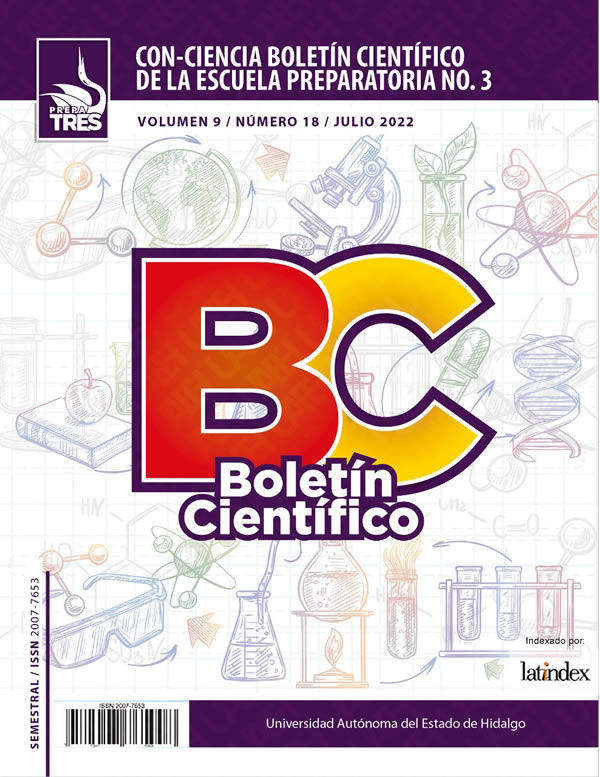El granado (Punica granatum L.); un árbol ancestral con efecto analgésico y antinociceptivo
Palabras clave:
Granada, efecto analgésico, dolor, efecto antinoceptivoResumen
Actualmente, la medicina alternativa goza de un auge sin precedentes debido a la búsqueda de nuevas terapias que coadyuven o sustituyan a los medicamentos que, de manera habitual generan efectos adversos. En este contexto, el granado (Punica granatum L.) es popular en la medicina tradicional para tratar diferentes tipos de dolor, sin embargo, dicho conocimiento es empírico, por lo que el presente artículo de divulgación muestra los aportes y evidencias científicas encontradas sobre este efecto, tratando de profundizar en el cómo y por qué es dado el mismo. Se encontró que diferentes partes de la granada mostraron un efecto antinociceptivo (en modelos preclínicos o animales) y analgésico (en humanos). La evidencia al momento apunta a que este efecto se debe a la presencia de polifenoles, alcaloides y ácidos grasos. Se sugiere que los mecanismos de acción pueden estar relacionados con la activación de la vía del óxido nítrico y el sistema opioide. Existe un gran futuro para los tratamientos en combinación medicamento/granada. Los resultados proponen que la granada y sus metabolitos secundarios podrían considerarse en el tratamiento del dolor inflamatorio, nociceptivo y neuropático.
Información de Publicación
Perfiles de revisores N/D
Declaraciones del autor
Indexado en
- Sociedad académica
- N/D
Citas
[2] Stover E, Mercure EW. The pomegranate: a new look at the fruit of paradise. HortScience. 2007;42(5):1088-92.
[3] Guerrero-Solano JA, Jaramillo-Morales OA, Velázquez-González C, la O-Arciniega D, Castañeda-Ovando A, Betanzos-Cabrera G, et al. Pomegranate as a Potential Alternative of Pain Management: A Review. Plants. 2020;9(4):419.
[4] IASP. Classification of Chronic Pain, Second Edition (Revised): International Association for the Study of Pain; 2012 [cited 2020 28/01/2020]. Available from: https://www.iasp-pain.org/PublicationsNews/Content.aspx?ItemNumber=1673&navItemNumber=677.
[5] Barrot M. Tests and models of nociception and pain in rodents. Neuroscience. 2012;211:39-50.
[6] Woolf CJ. Pain: moving from symptom control toward mechanism-specific pharmacologic management. Annals of internal medicine. 2004;140(6):441-51.
[7] Kaplan W, Wirtz VJ, Mantel-Teeuwisse A. Priority Diseases and Reasons for Inclusion (6.23. Low back pain). Priority medicines for Europe and the World 2013 update. Geneva: WHO; 2018.
[8] Borsook D. A future without chronic pain: neuroscience and clinical research. Cerebrum. 2012:7-. PubMed PMID: 23447793. Epub 06/27. eng.
[9] Jiang C, Wang H, Wang Q, Luo Y, Sidlow R, Han X. Prevalence of Chronic Pain and High-Impact Chronic Pain in Cancer Survivors in the United States. JAMA oncology. 2019.
[10] Gould III HJ, England JD, Liu Z, Levinson SR. Rapid sodium channel augmentation in response to inflammation induced by complete Freund's adjuvant. Brain research. 1998;802(1-2):69-74.
[11] Hunskaar S, Fasmer OB, Hole K. Formalin test in mice, a useful technique for evaluating mild analgesics. Journal of neuroscience methods. 1985;14(1):69-76.
[12] Jain V, Pareek A, Bhardwaj YR, Singh N. Attenuating effect of standardized fruit extract of punica granatum L in rat model of tibial and sural nerve transection induced neuropathic pain. BMC complementary and alternative medicine. 2013;13(1):274
[13] Le Bars D, Gozariu M, Cadden SW. Animal models of nociception. Pharmacological reviews. 2001;53(4):597-652
[14] Moghaddam G, Sharifzadeh M, Hassanzadeh G, Khanavi M, Hajimahmoodi M. Anti-ulcerogenic activity of the pomegranate peel (Punica granatum) methanol extract. Food and Nutrition Sciences. 2013;4(10):43.
[15] Raafat K, Samy W. Amelioration of diabetes and painful diabetic neuropathy by Punica granatum L. Extract and its spray dried biopolymeric dispersions. Evidence-Based Complementary and Alternative Medicine. 2014;2014:1-12.
[16] Wang R, Ding Y, Liu R, Xiang L, Du L. Pomegranate: constituents, bioactivities and pharmacokinetics. Fruit, vegetable and cereal science and biotechnology. 2010;4(2):77-87.
[17] Ouachrif A, Khalki H, Chaib S, Mountassir M, Aboufatima R, Farouk L, et al. Comparative study of the anti-inflammatory and antinociceptive effects of two varieties of Punica granatum. Pharmaceutical biology. 2012;50(4):429-38.
[18] Guerrero-Solano JA, Bautista M, Velázquez-González C, la O-Arciniega D, González-Olivares LG, Fernández-Moya M, et al. Antinociceptive Synergism of Pomegranate Peel Extract and Acetylsalicylic Acid in an Animal Pain Model. Molecules. 2021;26(18):5434.












